THIRD SUNDAY OF ADVENT
Sunday, December 16, 2012
Guest Writer for This Unit: Karen Baker-Fletcher, Professor of Systematic Theology, Perkins School of Theology, Southern Methodist University
The unit you are viewing, Third Sunday of Advent, is a compact unit. This means that it does not have a supporting cultural resource unit and worship unit. Instead, to enliven the imagination of preachers and teachers, we have provided scriptural text(s) that we suggest for this moment on the calendar along with a sermonic outline, suggested links, books, articles, songs, and videos. For additional information on Advent, see the archives of the Lectionary for 2008–2011.
I. Description of the Liturgical Moment
Bernice Johnson Reagon wrote the following for the First Sunday in Advent 2011:
Etymology: Advent: “important arrival,” 1742, an extended sense of Advent “season before Christmas” (O.E.), from L. adventus “a coming, approach, arrival,” from pp. stem of advenire “arrive, come to,” from ad- “to” (see ad-) + venire “to come” (see venue). Applied in Church Latin to the coming of the Savior, either the first or the anticipated second, hence Adventist, a name applied to millenarian sects, esp. the Millerites (U.S., 1843). In English, also sometimes extended to the Pentecost. (Source: etymonline.com)
Carl MaultsBy, Guest Cultural Resources Commentator, wrote in the 2008 Advent unit:
Advent, the first part of a larger liturgical season that includes Christmas and Epiphany, continues until the beginning of Lent. Traditionally the four Sundays prior to Christmas and the Sunday closest to November 30th mark the beginning of the season of Advent (from the Latin adventus, meaning “coming”), as well as the church year of most Western Christian churches (Eastern Christian churches use September 1 as the beginning). Initially Advent was a 40-day period of penitence, fasting, and confession as a means of spiritual preparation for the “coming” of the “Nativity of Jesus Christ.”
For Christians, Advent is the time when the church patiently prepares for the coming of Jesus Christ. However, it is not simply about waiting for the birth of Christ. The Advent season focuses on Christ’s threefold coming:
- Past: It was predicted by prophets, and then the Lord was born in Bethlehem 2,000+ years ago;
- Present: Christ comes to us again and again through the Word, the Sacrament, and the Holy Spirit; and
- Future: We await the final coming when Christ shall set all things in order and when we shall be with him throughout eternity. During Advent we ponder all three comings and our role and behavior relative to each of these moments. So we prepare.
II. Third Sunday of Advent: Sermonic Outline
A. Sermonic Focus Text: Romans 15:7-13 (New Revised Standard Version)
(v. 7) Welcome one another, therefore, just as Christ has welcomed you, for the glory of God. (v. 8) For I tell you that Christ has become a servant of the circumcised on behalf of the truth of God in order that he might confirm the promises given to the patriarchs, (v. 9) and in order that the Gentiles might glorify God for his mercy. As it is written, “Therefore I will confess you among the Gentiles, and sing praises to your name”; (v. 10) and again he says, “Rejoice, O Gentiles, with his people”; (v. 11) and again, “Praise the Lord, all you Gentiles, and let all the peoples praise him”; (v. 12) and again Isaiah says, “The root of Jesse shall come, the one who rises to rule the Gentiles; in him the Gentiles shall hope.”
(v. 13) May the God of hope fill you with all joy and peace in believing, so that you may abound in hope by the power of the Holy Spirit.
B. Possible Titles
i. Christ’s Birth Brings Hope
ii. Christ’s Birth Brings Hope to All
iii. Glory to the God of Hope
C. Point of Exegetical Inquiry
The birth of Christ brings hope to Jews and Gentiles, circumcised and uncircumcised. What is a Gentile and what does circumcision have to do with hope in God?
III. Introduction
The text from the Letter to the Romans for today was written for Jews and Gentiles. Paul begins one another, regardless of our backgrounds. Then, Paul speaks first to Jews in his by exhorting Jews and Gentiles to welcome one another, just as Christ has welcomed them. Welcoming one another is an action that glorifies God. We do not glorify God when we do not welcome congregation. Christ Jesus was a Jew, born to a Jewish mother and a Jewish step-father named Joseph. As an infant he would be circumcised. Paul announces that God sends Christ into the world as “a servant of the circumcised,” meaning Christ is a servant of the Jewish communities in Rome. The first Christians were Jewish, like Jesus and his disciples. That is why the text refers to the book of Isaiah, one of the sacred texts from the Old Testament that Paul, like Jesus, knew intimately. For Christians like Paul Jesus is the Messiah that God promised in the Book of Isaiah. God sends Christ into the world first to “become a servant of the circumcised on behalf of the truth of God in order that he might confirm the promises given to the patriarchs”. Who are the Jewish patriarchs? They are ancestors of the nation of Israel like Abraham, Isaac and Jacob. Hannah, Sarah, Rebekah and Leah are also ancestors whom many today recall as important biblical ancestors. God keeps the promises that God makes.
IV. Moves/Points
Move/Point One – Welcome one another.
a. God is inclusive; God welcomes all.
Paul emphasizes that God is inclusive. In the Book of Romans we see the Apostle Paul taking the gospel of Christ Jesus not only to the Jews but to the Gentiles. Jesus’ birth brings hope, peace, and joy not only to Jews, but also to Gentiles. Who are the Gentiles? The Gentiles are all those who have not been born to, adopted by, or raised by Jewish parents. Through Christ’s birth Gentiles, too, have hope in God’s promise of the messiah who invites all to receive salvation in the power of the Holy Spirit.
b. God gives hope to all through Christ.
The text for today also recalls words from the prophet Isaiah who announced that God promised to send a messiah—God’s anointed one. Paul and Christians today believe this is Jesus who is the “Christ,” which means “Messiah” in Greek and “anointed one” in English. The Letter to the Romans was written during a time when many writers, including Jewish writers, wrote in Greek. Christ confirms the promises of old that Paul’s Jewish audience is familiar with. In the birth of Christ, God fulfills God’s promise to the people of Israel. This is good news for Gentiles as well, because the God of creation is inclusive in giving hope to all for salvation through Christ.
Move/Point Two – What does circumcision signify?
a. Christ is circumcised.
Christ is a circumcised servant to the uncircumcised, the Gentiles, so that they too “might glorify God for his mercy.” The “Gentiles” in ancient Jewish understanding were those who did not practice circumcision as a sign of cleanliness and holiness out of faithfulness to the God of Israel. Circumcision is also painful and a sacrifice for children, family, and community hearing the cries of those undergoing circumcision. Circumcision is a symbol of faithfulness to God through cleanliness and sacrifice. Today, the medical profession teaches that circumcision is not necessary for cleanliness. Even as the word “circumcised” connotes the removal of the foreskin of a male infant’s reproductive organ, it more importantly signifies openness of the heart to God. The Gentiles of Paul’s day generally were uncircumcised in a physical sense. Jews understood circumcision as a distinctive Jewish ritual, body marker, and symbol to set the nation of Israel apart from other communities of faith. Paul realizes, as Christ taught, that spiritual law trumps ritual law. Therefore, God is merciful in God’s inclusion of Gentiles in the promise of healing and wholeness. The God of Israel is the God of all.
b. Praise God because salvation comes to all.
As a lover of Christ, Paul confesses and praises God’s name among Jews and Gentiles alike. Paul is known as the first great evangelist and missionary of the Church, spreading the good news of Christ Jesus’ coming into the world among all nations and sending out others to do the same. All may praise God for keeping promises and being merciful. All may confess and glorify God like Paul, because Christ’s birth brings hope for salvation to all.
Move/Point Three – There is room for all in the Family of God.
a. Physical circumcision is not necessary to be included in the Family of God.
While Paul was writing to a predominantly male Jewish and Gentile audience, Christ brings hope to people of every gender and age. Paul has male circumcision in mind, because in Jewish culture and religion the practice pertains to male infants and men. (Moses was circumcised as an adult by his wife Zipporah.) In cultures that practice female circumcision historically and today, as well as male circumcision, physical circumcision is not necessary for Christians. Women and men need not have their children circumcised as a symbol of faith in the God of Jesus Christ, who is the God of Israel and of Gentiles alike. This is good news for all families desiring inclusion in the larger Family of God, because circumcision is a painful surgical procedure. Instead, God loves us so much that God makes a sacrifice for us by sending Christ Jesus into the world to give us hope.
b. Circumcision of the heart is needed.
Christ, the very Word of God, is one with God and is God incarnate through the power of the Holy Spirit. God only asks us to open our hearts to Christ who is a living sacrifice. This is called a circumcision of the heart and is a spiritual circumcision. In doing so, we sacrifice bad habits of the heart, principally our self-worship and self-idolatry, to worship God instead. In worshipping God we confess God and glorify God. We are able to do this because of Christ’s birth through the power of the Holy Spirit.
V. Celebration
Christ is Immanuel, God with us, who empathizes with us. God in Christ is our savior who makes us whole from the inside out, filling us with hope to realize the realm of God on earth as in heaven. Christ is the promised Messiah, from the root of Jesse who was King David’s father, prophesied in the book of Isaiah. Through Christ’s birth we have hope in freedom to love God and one another, which brings peace and joy. Let us receive Christ, who gives us hope by being born in our hearts through the empowering work of the Holy Spirit.
VI. Illustration(s)
Imagine a group of people from all walks of life, backgrounds, ages, colors, and genders praising and giving God the glory together. Choose a favorite illustration of your choice that represents this.
VII. Sounds, Sights, and Colors in This Passage
|
Sounds: |
singing and rejoicing: Hallelujah, Praise God, Thank You God, Thank You Jesus, praise music; hand clapping; tambourines and drums;
|
|
Sights: |
Hands lifted in praise; praise dancing; sacred/liturgical dance; and
|
|
Colors: |
Bright and joyful colors like purple, green, blue, gold, and red to represent the power of the Holy Spirit who produces joy, peace, and hope in verse 13.
|
VIII. Songs to Accompany This Sermon
A. Well-known Song(s)
- Waitin’ on Jesus. By Doug Williams, Leonard Williams, and Melvin Williams
- We Didn’t Know. Author unknown
- I’ll Wait on the Lord. Traditional
B. Modern Song(s) (Written between 2005–2011)
- Emmanuel. By Daryl Coley
- Gonna Wait on the Lord. Traditional
- I’m Waiting on the Lord. Traditional
- Who Would Imagine a King. By Mervyn Warren
- Still the Lamb. By T. C. Campbell and W. Campbell
- Call Him Jesus. By T. C. Campbell and W. Campbell
C. Spiritual(s)
- My Lord! What a Morning. Negro Spiritual. Arr. by Melva Costen
- Some Day. By Charles A. Tindley. Arr. by F. A. Clark
- He Lives. By Alfred H. Ackley
- God Is Here. By Martha D. Munizzi, Israel Houghton, and Meleasa Houghton
- Rockin’ in Jerusalem. Negro Spiritual
- Mary Had a Baby. Traditional
- O Come, O Come, Emmanuel. By John Mason Neale and Henry Sloane Coffin
D. Liturgical Dance Music
- Suddenly. By Noel Hall, Fred Hammond, and Kim Rutherford
- Watch and Pray. By Jesse Ellis
E. Song(s) for the Period of Prayer
- Just a Little More Faith. Traditional
- Jesus Is Coming Again. Traditional
F. Sermonic Selection
- Every Valley Shall Be Exalted. By George Friedrich Handel
- Let All Mortal Flesh Keep Silence. Traditional
G. Invitational Song(s)
- Pass Me Not, O Gentle Savior. By Fanny J. Crosby. Tune by William H. Doane
- Softly and Tenderly Jesus Is Calling. By Will L. Thompson
- Lead Me, Guide Me. By Doris M. Akers. Harm. by Richard Smallwood
- It’s Me O Lord. Traditional
H. Benediction Song(s)
- My Life Is in Your Hands. By Kirk Franklin
- God Is Standing By. By Jessy Dixon
IX. Videos, Audio, and/or Interactive Media
X. Books to Assist in Preparing Sermons, Bible Studies, and/or Worship Services Related to Advent
 |
Webb, Lauran B. Watching and Waiting. Raleigh, NC: lulu.com, 2011. |
|
|
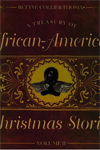 |
Collier-Thomas, Bettye. A Treasury of African-American Christmas Stories, Vol. II. New York, NY: Henry Holt & Co., 1999. |
|
|
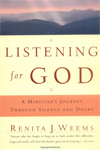 |
Weems, Renita J. Listening for God: A Minister’s Journey Through Silence and Doubt. New York, NY: Touchstone, 2000. |
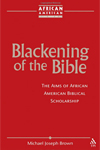 |
Brown, Michael Joseph. Blackening of the Bible: The Aims of African American Biblical Scholarship. Harrisburg, PA: Trinity Press, 2004. |
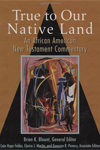 |
Blount, Brian K., Cain Hope Felder, Martin Clarice, et al. True to Our Native Land: An African American New Testament Commentary. Minneapolis, MN: Fortress Press, 2007. |
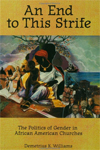 |
Williams, Demetrius K. An End to This Strife: The Politics of Gender in African American Churches. Minneapolis, MN: Fortress Press, 2004. |
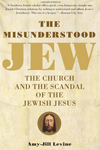 |
Levine, Amy Jill. The Misunderstood Jew: The Church and the Scandal of the JewishJesus. New York, NY: HarperCollins, 2006. |
XI. Links to Helpful Websites for a Celebration of Advent
XII. Notes for Select Songs
A. Well-known Song(s)
- Waitin’ on Jesus. By Doug Williams, Leonard Williams, and Melvin Williams
Location:
The Williams Brothers. Still Standing. Jackson, MS: Blackberry Records, 1997.
- We Didn’t Know. Author unknown
Location:
Lawrence, Donald & the Tri City Singers. Hello Christmas. Brentwood, TN: Star Song Communications, 1997.
- I’ll Wait on the Lord. Traditional
Location:
Davis, Mary Johnson. Gospel Warriors: 50 Years of Female Gospel Classics. New York, NY: Spirit Feel, 1990.
B. Modern Song(s) (Written between 2005–2011)
- Emmanuel. By Daryl Coley
Location:
Verity First Decade: Vol. 3: A Celebration of Christmas. New York, NY: Verity, 2005.
- Gonna Wait on the Lord. Traditional
Location:
B.W.R.D. Command. Apple Valley, CA: I Am Unlimited Records, 2006.
- I’m Waiting on the Lord. Traditional
Location:
Gospel Leaders. Gospel Gold: Peace in the Valley. Santa Ana, CA: Q Records, 2007.
- Who Would Imagine a King. By Mervyn Warren
Location:
Houston, Whitney. The Preacher’s Wife. New York, NY: Arista, 1996.
- Still the Lamb. By T. C. Campbell and W. Campbell
Location:
Mary Mary. A Mary Mary Christmas. New York, NY: Sony Music Distribution, 2006.
- Call Him Jesus. By T. C. Campbell and W. Campbell
Location:
Mary Mary. A Mary Mary Christmas. New York, NY: Sony Music Distribution, 2006.
C. Spiritual(s)
- My Lord! What a Morning. Negro Spiritual. Arr. by Melva Costen
Location:
African American Heritage Hymnal. Chicago, IL: GIA Publications, 2001. #195
- Some Day. By Charles A. Tindley. Arr. by F. A. Clark
Location:
Zion Still Sings for Every Generation. Nashville, TN: Abingdon Press, 2007. #139
- He Lives. By Alfred H. Ackley
Location:
African American Heritage Hymnal. #275
- God Is Here. By Martha D. Munizzi, Israel Houghton, and Meleasa Houghton
Location:
Zion Still Sings. #147
- Rockin’ in Jerusalem. Negro Spiritual
Location:
Jackson, Mahalia. The Best Loved Spirituals. New York, NY: Sony Music Distribution, 1995.
- Mary Had a Baby. Traditional
Location:
Marsalis, Wynton. Christmas Jazz Jam. Marina Del Ray, CA: Compass Productions, 2009.
- O Come, O Come, Emmanuel. By John Mason Neale and Henry Sloane Coffin
Location:
African American Heritage Hymnal. #188
D. Liturgical Dance Music
- Suddenly. By Noel Hall, Fred Hammond, and Kim Rutherford
Location:
Hammond, Fred. Christmas…Just Remember. New York, NY: Verity, 2001.
- Watch and Pray. By Jesse Ellis
Location:
Saunders, Ernie. New Beginning. Westminster, VT: Silverwolf Records, 1997.
E. Song(s) for the Period of Prayer
- Just a Little More Faith. Traditional
Location:
Jackson, Estella. Doing What I Do Just to Praise You. Lincoln, NE: Estella Jackson, 2006.
- Jesus Is Coming Again. Traditional
Location:
Spiritual QC’s. Jesus Is Alive and Well. Grand Rapids, MI: E&J Recordings, 1996.
F. Sermonic Selection
- Every Valley Shall Be Exalted. By George Friedrich Handel
Location:
Lee, Lizzie and Chris Willis. Handel’s Messiah: A Soulful Christmas. New York, NY: Warner Alliance, 1992.
- Let All Mortal Flesh Keep Silence. Traditional
Location:
Cockerham, James. Basic/Cockerham: Nobody Like Jesus. Decatur, GA: Copro, 1998.
G. Invitational Song(s)
- Pass Me Not, O Gentle Savior. By Fanny J. Crosby. Tune by William H. Doane
Location:
African American Heritage Hymnal. #435
- Softly and Tenderly Jesus Is Calling. By Will L. Thompson
Location:
African American Heritage Hymnal. #347
- Lead Me, Guide Me. By Doris M. Akers. Harm. by Richard Smallwood
Location:
African American Heritage Hymnal. #474
- It’s Me O Lord. Traditional
Location:
Barett, Pastor T.L. & The Youth for Christ Choir. Like a Ship…(Without a Sail). Seattle, WA: Light in the Attic Records, 1971.
H. Benediction Song(s)
- My Life Is in Your Hands. By Kirk Franklin
Location:
Franklin, Kirk and God’s Property. Get On the Bus. Santa Monica, CA: Interscope, 1996.
- God Is Standing By. By Jessy Dixon
Location:
Hawkins, Walter. Love Alive. Nashville, TN: Compendia Music Group, 1975.
|